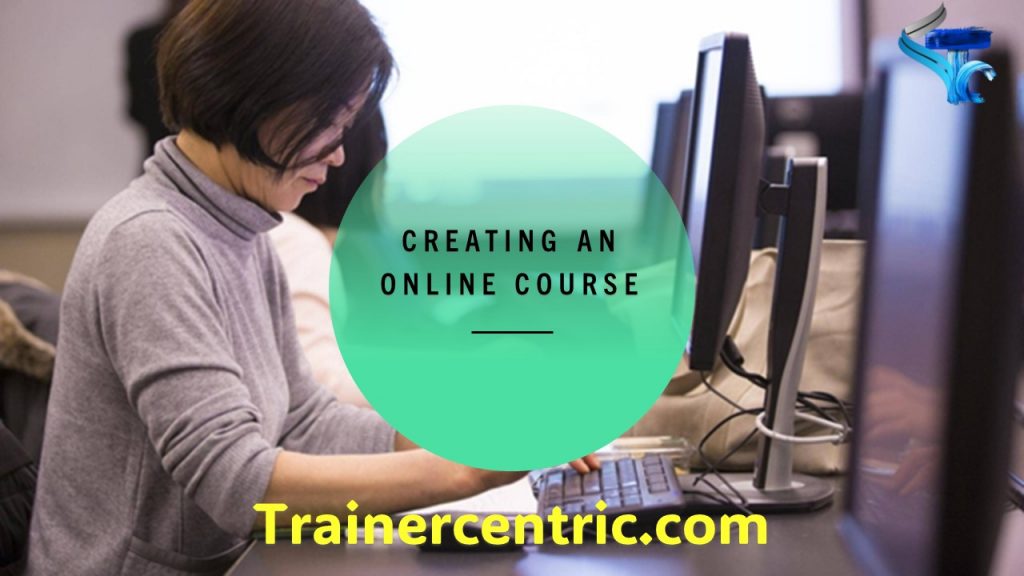
In today’s digital age, online learning has become increasingly popular, and creating an online courses has become a crucial endeavour for educators and content creators. One widely recognised and proven approach for designing and delivering successful online courses is the ADDIE model. This comprehensive guide will walk you through the process of developing an online course using the ADDIE model, from initial analysis to evaluation.
Introduction to Online Course Development
Online courses offer learners the flexibility to acquire new skills and knowledge from the comfort of their own homes. Developing an effective online course requires careful planning and execution to ensure optimal learning outcomes.
The ADDIE model, which stands for Analysis, Design, Development, Implementation, and Evaluation, provides a structured framework to guide educators through the course creation process.
Online course development involves the creation and delivery of educational content through digital platforms. It encompasses various stages, from conceptualising the course to delivering it to learners worldwide. This process combines instructional design, multimedia development, and technological implementation to craft effective learning experiences.
The Growing Demand for Online Learning
In recent years, the demand for online learning has skyrocketed. Learners seek the flexibility to acquire new skills at their own pace and convenience. Online courses cater to diverse audiences, including working professionals, students, and enthusiasts, providing an alternative to traditional classroom settings.
Understanding ADDIE Model
In the realm of online course development, the ADDIE model stands as a stalwart framework that guides the creation of effective and engaging courses. This model encompasses five distinct phases—Analysis, Design, Development, Implementation, and Evaluation—which collectively ensure the seamless development of high-quality online courses.
Since its initial introduction in the 1970s, the paradigm has been utilised by training specialists. We will go over each stage analyse design development implementation and evaluation of this model and how it can be applied to creating efficient instructional goals in this piece.
ADDIE stands for Analysis, Design, Development, Implementation, and Evaluation. It’s a systematic instructional design framework that serves as a road map for creating effective learning experiences. Let’s break down each phase:
Analysis: Unveiling the Training Needs
Before diving into the creation of any training program, a meticulous analysis is essential. This phase involves identifying the learning objectives, target audience, existing knowledge gaps, and the specific goals the training aims to achieve. By conducting a thorough training need analysis, trainers can tailor their approach to address the unique needs of learners.
Design: Crafting a Blueprint for Success
The design phase revolves around crafting a detailed outline of the training program. This includes structuring the content, selecting appropriate teaching methodologies, and designing assessment strategies. A crucial aspect of this phase is ensuring alignment between the learning objectives and the overall design to foster meaningful learning experiences.
Development: Bringing Concepts to Life
Once the blueprint is ready, the development phase comes into play. Content creation takes centre stage, where trainers produce the learning materials, presentations, interactive modules, and assessments. This phase requires a harmonious blend of creativity and pedagogical expertise to translate ideas into engaging learning assets.
Implementation: Bridging Theory and Practice
With the materials prepared, it’s time to roll out the training program. During implementation, trainers execute the lessons according to the lesson plan. Interactivity, engagement, and learner feedback are crucial components that facilitate effective knowledge transfer from the learning materials to the participants.
Evaluation: Measuring Effectiveness and Continuous Improvement
Evaluation is a continuous process that occurs throughout the training life cycle. This phase involves assessing the training’s effectiveness in achieving the desired outcomes. Feedback from learners, performance metrics, and assessment results are analysed to identify areas of success and areas that require improvement.
Key Steps in Creating an Online Course with ADDIE Model
Here are the basic steps that you should follow while creating an online course with ADDIE model:
Step 1 : Determining Learning Objectives and Target Audience
Every online course begins with clear learning objectives. Instructors must define what learners should achieve after completing the course. Additionally, identifying the target audience helps tailor the content and teaching approach to meet their needs.
Step 2: Content Structuring and Outlining
- Organizing course content in a logical structure enhances the learning experience while creating an online course. An outline guides the flow of topics, ensuring a coherent and progressive learning journey.
- Begin your course with a compelling introduction that outlines what learners can expect to gain. Set clear learning objectives to guide participants through the journey.
- Divide your course into manageable modules while creating an online course.
- Each module should have a specific theme or topic, and within each module, break down the content into smaller learning units.
- For each learning unit, create a detailed lesson outline while creating an online course. This could include headings, subheadings, and bullet points to map out the flow of information.
- Integrate assessments and interactive activities throughout your course. This keeps learners engaged and allows them to apply what they’ve learned while creating an online course.
- Wrap up your course with a clear conclusion that summarizes key takeaways. Provide guidance on what learners can do next to continue their learning journey.
Step 3: Interactive Elements and Assessments
Online courses that rely solely on text can quickly become monotonous and disengaging. Incorporating multimedia elements such as videos, animations, and infographics can capture learners’ attention and cater to diverse learning styles.
Simulations and virtual labs provide learners with the opportunity to apply theoretical knowledge in practical scenarios. This hands-on experience bridges the gap between theory and real-world application, enhancing understanding and retention.
Formative assessments, conducted during the learning process, offer insights into learners’ understanding and areas that need improvement. These assessments guide learners on their learning journey and help instructors tailor their teaching strategies.
Summative assessments evaluate learners’ overall comprehension and mastery of the subject. They provide a comprehensive view of the learning outcomes achieved by learners throughout the course.
Step 4: Selecting the Right Platform for Delivery while Creating a Course Online
As the demand for online education surges, selecting the right platform for delivering your online course is vital. A well-chosen platform can enhance the learning experience and ensure that your content reaches the right audience.
LMS platforms like Moodle, Canvas, and Blackboard offer comprehensive course management features. They are ideal for educational institutions and businesses aiming for in-depth content organisation.
Creating your website provides maximum control over customisation and branding. However, it requires more technical expertise and maintenance.
Platforms like Udemy, Coursera, and Teachable have established audiences, simplifying marketing efforts. However, they may limit control over pricing and student data.
Best Practices for Creating an Online Courses

As traditional learning methods evolve, educators and learners alike are embracing the convenience and flexibility that online courses offer. However, creating an online course and making it successful, requires careful planning and execution. Please consider the following best practices while creating an online course:
- Choosing the Right Platform for Your Course: Selecting the appropriate platform to host your online course is paramount. It should offer user-friendly navigation, customisation features, and reliable technical support.
- Defining Clear Learning Objectives: Clearly outline what your learners will achieve by the end of the course. This helps in setting expectations and keeping the course focused.
- Engaging Course Content Creation: Craft compelling and well-organized content that aligns with the learning objectives. Use a mix of text, images, videos, and interactive elements to enhance engagement.
- Interactive Learning Activities: Integrate quizzes, assignments, discussions, and live sessions to encourage active participation and a deeper understanding of the material.
- Effective Communication Channels: Establish easy-to-access communication channels for students to interact with instructors and peers, fostering a collaborative learning environment.
- Building a Supportive Online Community: Encourage learners to connect and share their insights. A strong sense of community enhances motivation and provides opportunities for networking.
- Regular Assessments and Feedback: Incorporate regular assessments to gauge progress and offer constructive feedback. This keeps learners on track and helps them improve.
- Optimizing for Mobile Devices: Given the prevalence of mobile devices, ensure that your course content is responsive and accessible on various screen sizes.
- Promotion and Marketing Strategies: Effectively market your course through social media, email campaigns, and partnerships to reach a wider audience and boost enrollment.
- Gathering and Analyzing Course Metrics: Monitor metrics like completion rates, engagement levels, and feedback to gain insights into the effectiveness of your course and make necessary adjustments.
- Continuous Improvement and Updates: Keep your course content updated and relevant. Respond to learner feedback and integrate improvements over time.
- Ensuring Accessibility for All: Make sure your course is accessible to learners with disabilities by providing closed captions, alt text for images, and other necessary accommodations.
- Handling Technical Glitches: Be prepared to troubleshoot technical issues that learners might encounter during the course. Promptly address these issues to minimize disruptions.
Gathering Resources and Materials while Creating an Online Course
Creating an online course and making it successful and engaging, requires more than just technical expertise. It demands a strategic approach to gathering resources and materials that not only captivate learners but also deliver valuable insights.
Originality is the key
Craft unique content that reflects your expertise. Incorporate multimedia elements like videos, images, and animations to enhance understanding and engagement. There are several free and paid tools that are available in the market to help you create unique images for your course materials.
Microsoft PowerPoint is such a tool that lets you merge images, remove the background of images and lets you add image on top of another images making your entire design unique and creative.
Visual Aids and Info graphics
Make complex concepts digestible with visual aids. Utilise data visualisation tools and info graphic creation platforms to simplify information. You can simply download lot of pre-created infographics from internet. Please ensure that you double check the copy right issues while using the images from the internet.
Microsoft PowerPoint let you choose the copyright free images while searching for the suitable images online. Adding a lot of screenshot also simplifies a lot of concepts while creating an online course.
Building a Resource Library
Organise your materials systematically is very important for your students while creating an online course. Utilize cloud storage for easy accessibility, ensuring learners can revisit resources whenever needed. This library serves as a repository of valuable materials that enhance the learning journey of your students.
An organised resource library is like a well-structured bookshelf, where each resource finds its designated place. Start by categorising your materials into relevant sections while creating an online course.
These sections could be based on topics, modules, or types of resources. For instance, if you’re teaching a photography course, you could have sections for camera techniques, composition, editing software, and real-world examples.
Within each section, create sub folders or tags to further refine the organisation. This allows students to easily navigate through the library and locate the specific resource they need without sifting through a clutter of files. A clear organisational structure also reflects your commitment to providing a seamless learning experience.
Recording Engaging Video Content
Video is a powerful tool for engagement while creating an online course. Set up a conducive recording space, create a well-structured script, and deliver content with enthusiasm.
Choose a well-lit and quiet location to minimize distractions and ensure clear visuals and audio. Natural light is your best friend – position yourself facing a window or use soft, diffused lighting to avoid harsh shadows. A clutter-free backdrop with relevant visuals can enhance the overall aesthetics of your videos.
Invest in a good-quality microphone to capture crisp audio while creating an online course. Clear sound is crucial for maintaining your students’ attention and conveying your message effectively. Consider using a pop filter to reduce unwanted noise and plosive sounds, ensuring a professional audio experience.
The Power of Simplicity in Design
Embracing simplicity while creating an online course in design can make a significant difference in how your content is perceived and absorbed by your learners. By streamlining visuals, layouts, and overall presentation, you create an environment that fosters effective learning and engagement.
When designing presentation slides, adopt a minimalistic approach. Cluttered slides with excessive text and graphics can overwhelm learners, making it difficult for them to focus on key information. Instead, use each slide to convey a single idea or concept. Limit text to concise bullet points or short phrases.
Opt for a clean and consistent color scheme that aligns with your branding or course theme while creating an online course. Avoid using too many colors, as it can distract from the content. Similarly, choose legible fonts and maintain a consistent font style throughout the presentation.
Navigating Copyright and Citations
While creating an online course, respecting copyright laws and using proper citations is not just a legal obligation, but a fundamental ethical practice. Properly navigating copyright and citations ensures that you uphold academic integrity, provide due credit to creators, and contribute to a culture of knowledge sharing.
Fair use allows for the limited use of copyrighted materials without seeking permission from the copyright holder. However, fair use is subject to specific conditions, such as the purpose of use, the nature of the work, the amount used, and the effect on the market value of the original work.
For educational purposes, while creating an online course, certain uses may fall under fair use, such as using excerpts of text, images, or videos to support commentary, criticism, research, or teaching. It’s essential to assess each use case individually and adhere to the principles of fair use.
Conclusion
Developing an online course using the ADDIE model is a systematic and effective approach to create impactful learning experiences. By carefully analysing learners’ needs, designing engaging content, and continuously improving based on evaluation, educators can ensure the success of their online courses.

![The Power of Storytelling in Corporate Training: Igniting Success and Inspiring Growth [2023]](https://trainercentric.com/wp-content/uploads/2023/06/storytelling-1024x576.jpg)

